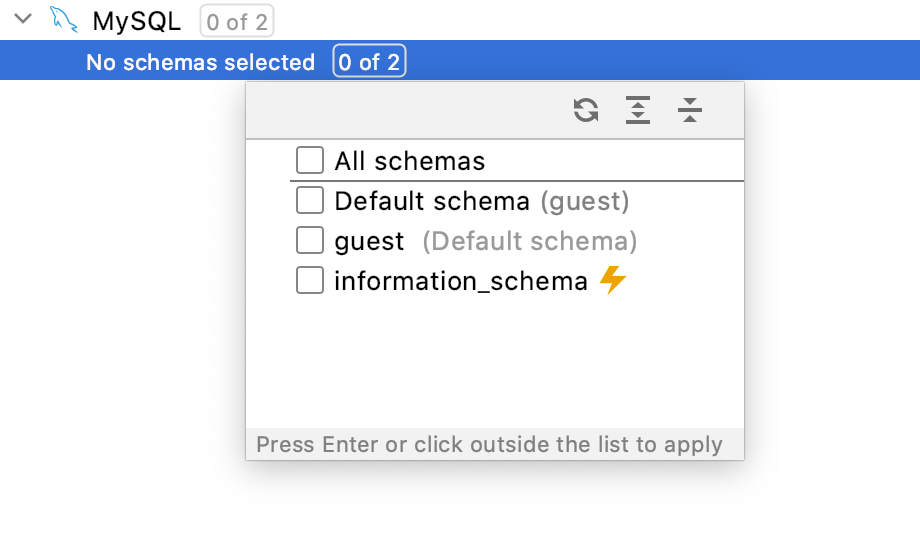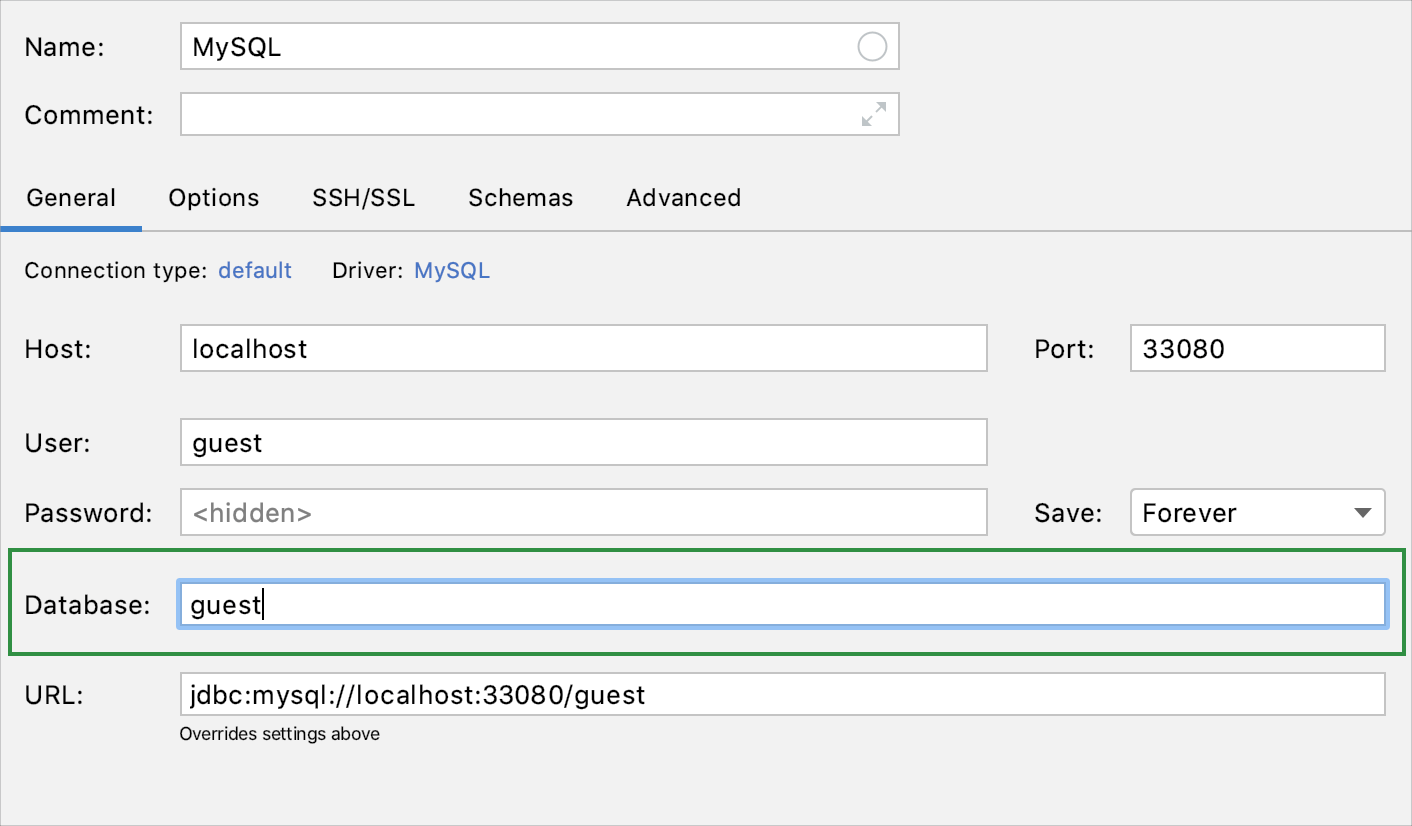Cannot find a database object in the database tree view
If you see no objects below the schema level, cannot find changes in objects, experience broken tables or any other visualization problems, try the following steps to resolve the problem.
Step 1. Refresh the database state
If someone changed the remote database data or view, the local view of the database might differ from the actual state of the database.
To synchronize the database state automatically, in the Database tool window (), click the Data Source Properties button
and select the data source that you want to change. On the Options tab, select the Auto sync checkbox.
If the Auto sync checkbox is cleared, the view of the data source in the Database tool window () is synchronized with the actual state of the database only when you click the Refresh icon
or press Ctrl+F5.

Step 2. Verify that the necessary schemas are selected
When you create a data source, the data source is created with no schemas selected. You need to select schemas with which you plan to work.

The Default schema or Default database is a schema or a database that will be current on connection to a data source. The current schema is a schema that is current in a session. You can change the current schema by using SET CURRENT_SCHEMA. The default schema depends on database settings and data source settings that you set in the JDBC URL.
You can change this default in connection settings of a data source. To change the default, click the Data Source Properties icon in the Database tool window (). In the data sources list, select your data source. In the Database field, type the name of a schema or a database that you want to use as a default.

To display a schema in the Database tool window, perform one of the following actions:
In the Database tool window (), right-click a data source and navigate to . Select or clear checkboxes of schemas that you want to enable or disable. Press Enter.
Click the N of N link near the data source name. In the schema selection window, select or clear checkboxes of schemas that you want to enable or disable. Press Enter.
To hide all schemas, navigate to .

Step 3. Force refresh schema information
The Force Refresh action clears the data source information from cache and loads it again from scratch.
In the Database tool window (), right-click a data source and select .

Step 4. Clear and synchronize the schema cache
Clear the DataGrip schema cache (right-click a data source and select ). Synchronize the view (see Step 1. Synchronize the database state).
Step 5. Switch to the JDBC-based introspector
Consider this step as a temporary workaround. If you cannot see objects in the database explorer, you might have a bug. Collect troubleshooting materials and send them to our support team.
Temporary enable introspection with JDBC metadata
Open data source properties. You can open data source properties by using one of the following options:
Navigate to .
Press Ctrl+Alt+Shift+S.
In the Database tool window (), click the Data Source Properties icon
.
On the Data Sources tab, select the data source that you want to modify.
Click the Advanced tab and select the Introspect using JDBC metadata checkbox.
Synchronize the view (see Step 1. Synchronize the database state).

Collect information by using Diagnostic tools
Right-click a data source and navigate to . Select between the following options:
Dump Model: generates a DataGrip-specific representation of the database structure (a database model). You can include automatically generated content by clicking the Include auto-generated content icon.

Diagnostic Refresh: reloads the metadata from the database and generates a LOG file. This information might be helpful for the support team when you think that your introspection is slow.

Prepare Introspector Diagnostics: generates three files that include information about the data source (dataSource.txt), a module that was used to load the metadata from the database (introspector.txt), and a part of the database model (model.xml).
This information might be helpful when introspection works incorrectly. For example, when you see something outdated or do not see new objects.
The following screenshot shows the example output of these three files.

To report an issue, you can use any option that is described in the Where to report an issue section. But we recommend using the JetBrains Support Center.
Submit a request in the JetBrains Support Center
Click .
Fill in the Submit a request form.
If it is possible, attach some troubleshooting materials.
Click Submit.